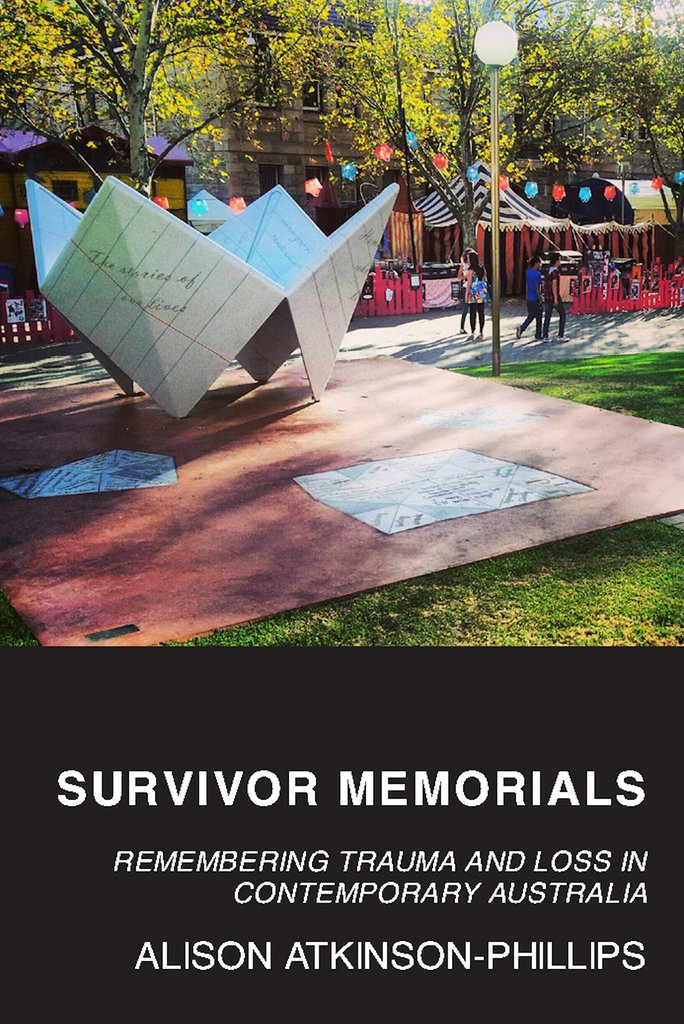by Dr Alison Atkinson-Phillips, 2019, University of WA Press
I was surprised by this book. I know Atkinson-Phillips’ work from previous associations, so it wasn’t the high quality readability that surprised me. It flows beautifully and carefully.
I also knew it would be compassionate. As she travels to survivor memorials around Australia, Alison records the persons involved with empathy and the aesthetics of each site with sympathy. I often found myself quite moved, not because of any journalistic milking of my sympathy, but in the competent record of the story.
Why was I surprised? I just didn’t think that I would like the book all that much. It is a survey of record and I thought it would be laborious in detail and philosophy. Yes, it records in detail who did what and why, as a good researcher should. Yet it is skilfully framed within a history of memorials.
I half expected that the subject of memorials might be irrelevant to where I am at. However, as the story was placed out and the distinction between memorial and monument emerged more clearly, I found parts of myself.
I, too, am one among many who went from an early age to remember the ANZAC’s sacrifice, remembering the dead. I too have moved to a deep attachment, for instance, to the stories of the survivors of the Stolen Generations, remembering the living and their fathomless loss. This book helps me understand a wave of change on the edge of my life.
The story also locates the physical memorials within the wider narrative of injustices done. They are often purposed as ‘so this may be remembered and then never happen again to anyone else’. However, two things at least dull the edge of this sharp purpose.
Firstly and often, bureaucrats and politicians can make the memorial as part of an agenda of reparations but, in order to want the problem to go away, they can plan it in ways that sideline the victims whose memory it is. The resulting design dulls the realities of the story.
Secondly, the memorials are noticeable only when new. The enthusiastic supporters who campaigned for it soon get old and tired. And like all street fixtures, the memorial objects quickly become invisible in the public spaces they occupy, a lunch spot or an ignored object to walk around. Anyone who reads the plaques may ‘get it’, but few stop to do that. It is a passive way to try to create a public memory.
That is not enough of a reason to stop making memorials, but Alison points out several memorials that build memory in other ways as well – an annual ceremony, curated ways of interacting with the site, a longer involvement of community development strategies in creating the site, artist’s generous use of forms and processes to sharpen meaning-making, rather than blunt them.’
Perhaps one of the memorials surveyed is near your place. Reading this book will prepare you to read the site, to respond with more insight and empathy to its story and, even more, to understand the context in which these great losses were suffered. Then, you will have a response that is true.
Rev Dr Ian Robinson
